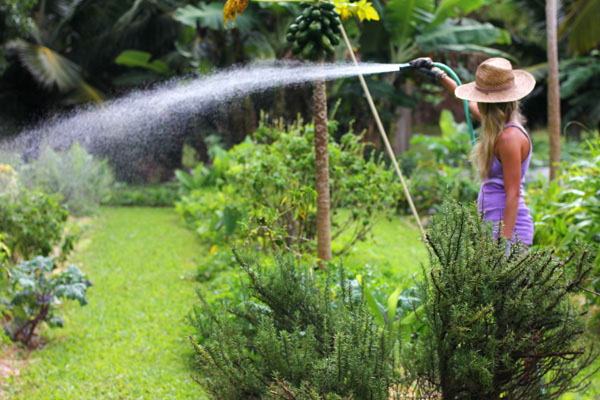Conserve Water Efficiently
To properly conserve water in your garden, it’s important to plan ahead. Plant your garden according to plant genus. For example, group succulents, plants that require more moisture and plants that require sporadic watering, according to soil moisture. If garden soil tends to hold moisture in one area more than another, this may help decide where to locate plants. Many gardening services can provide garden maintenance that helps gardeners maintain a lush, garden with minimal use of water. This is a few suggestions from The Irrigation Shop on how to conserve water in your garden most efficiently.
Know Your Local Water Table
Most gardeners overlook how important it is to know your local water table. To get an accurate assessment of your local water table, that is the underground aquifers that supply water to soil, consult with professional gardening services that can test the range of water in soil. This will help gardeners achieve a higher quality of garden maintenance and conserve water. The topography of the landscape is another factor in water conservation. If your garden lies atop a sloping, high water table, it’s important to understand how rain events and regular watering will affect runoff. On flat, even landscapes with less runoff, the plan for water conservation may be less difficult since soil will retain water naturally whether or not the water table beneath the soil is high. This will result in less watering of plants, trees and shrubs and allow for a natural ingestion of water into roots.
Unique Water Conservation Techniques
In many areas, rain water is conserved by storing in artistically designed rain barrels. In other areas, mulching is a great way to conserve water. Consider the natural effects of rain and wind events. To keep plants from deteriorating while in winter hibernation, consider using fallen leaves as a mulch to protect plants. Fallen leaves are nature’s protection from severe drought and extreme temperatures. Use decorative rain spouts to collect rain water. Consider an attractive rain chains that trickle rain water slowly and disperse it into soil more expansively.
Water Conservation and Lawns
Lawns tend to be water thirsty. To conserve water, consider reducing the size of the lawn by adding plants that require less water. To determine which plants need water most, study the root system. Roots that lie closets to the surface of soil are water thirsty. Roots that seek water deep down into soil require less water. Consider adding flexible “sleeves” to downspouts so water can be properly directed toward gardens and away from structural foundations.
Watering Times
Check with municipal authorities to determine best water times.







